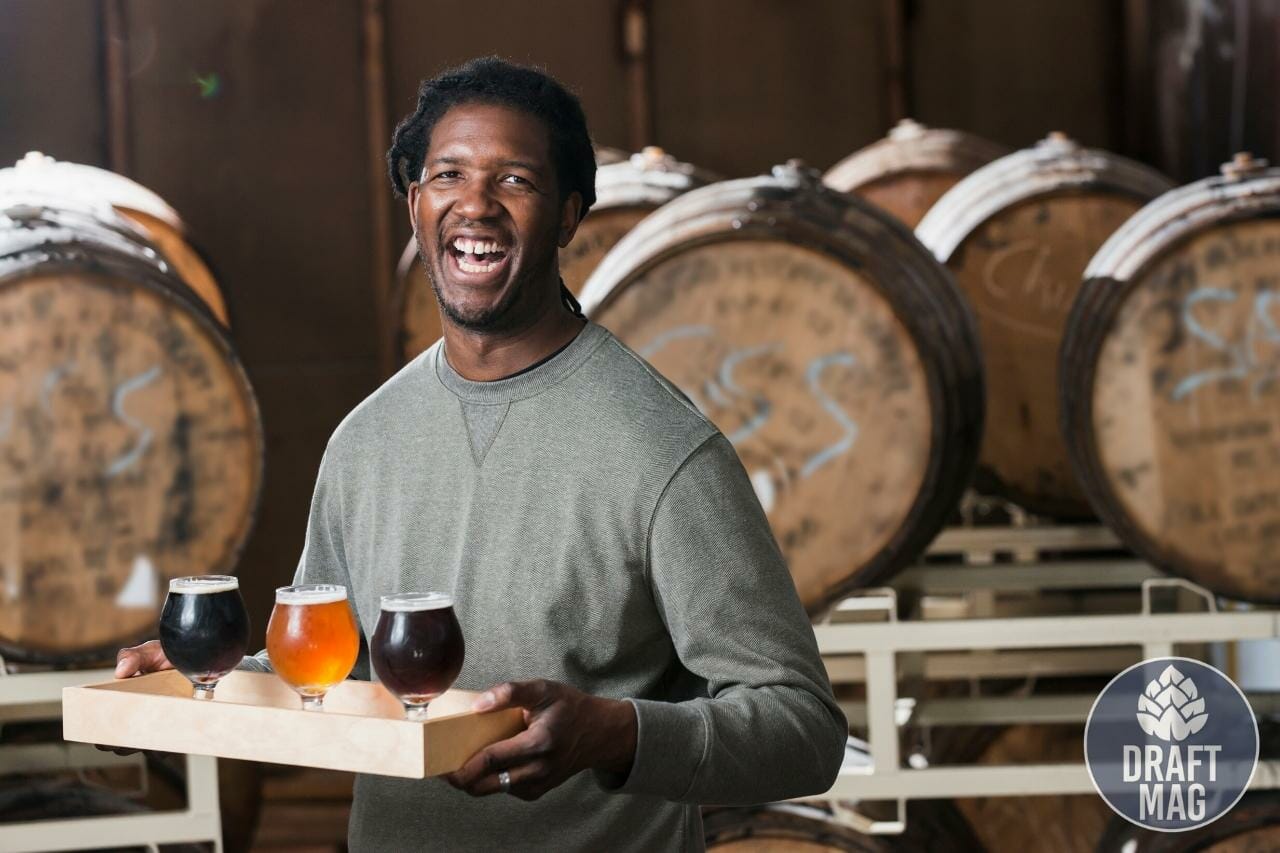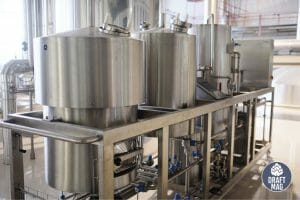What Is a Microbrewery? Everything You Need To Know About Them
 A microbrewery produces beer in smaller quantities compared to other breweries. They focus on brewing specialty beers with bold flavors and an exciting taste for adventurous beer drinkers.
A microbrewery produces beer in smaller quantities compared to other breweries. They focus on brewing specialty beers with bold flavors and an exciting taste for adventurous beer drinkers.
As common as the word “microbrewery” is, some people still find its meaning vague.
This article will show you exactly what a microbrewery is and other essential information you need to know about micro breweries.
What Is a Microbrewery?
A microbrewery is a small-scale brewery that produces small quantities of specialty beers that are to be sold across the region they’re located. To qualify as a microbrewery, a brewery must produce less than 15,000 beer barrels annually.
Microbreweries only brew beers that are seasonal or have special ingredients. These specialty brews are also described as microbrews and are usually distinguished by bold flavors, maltiness and spicy hops.
Although microbrews are usually sold off-site, many microbreweries double as brew pubs, having a bar and restaurant catering to their customers. These bars only sell brews from their microbrewery to the public.
– What Is the Difference Between a Microbrewery and a Brewery?
The main difference between a microbrewery and a brewery is their production scale, as microbreweries are allowed to produce no more than 15,000 beer barrels annually while regular breweries can produce millions of barrels annually. As its name implies, microbreweries produce beers often referred to as specialty beers or microbrews on a lesser scale compared to regular breweries.
In terms of size, structure, equipment and brewing process, breweries operate larger than a microbrewery. Breweries also make more profit and have more reach than microbreweries. Hence, they also pay higher taxes compared to microbreweries.
An example of a brewery is the internationally recognized Coors brewery. They’re responsible for more than half of US beer production and distribution. A microbrewery can mostly gain popularity as a brewpub, a tasting room or through a beer festival. These are the opportunities to get people to taste their special brews since they can only operate on a regional level.
– Equipment You Can Find in a Microbrewery
Although microbreweries are quite small, there’s a big emphasis on the brewing process. It’s impossible to make a good brew without having the right equipment.
When visiting a microbrewery, some of the equipment you’ll see inside include:
- Fermenting system
- Lauter tun
- Barrels or kegs
- Malt mill
- Packaging machine
- Dispenser
- Mash tank
- Hydrometer
- Valves
- Heat exchanger
- Cooling pump
- Filtrating system
- Sterilizing mixture and so on.
– Famous Microbreweries in the U.S. You Can Visit
Microbreweries are known to produce great-tasting beer. Coupled with the fact that many microbreweries also serve as a bar and restaurant, they’re an excellent spot for a cold drink with friends. Here are five famous microbreweries in the U.S. that you can always visit for a taste of the best specialty beers.
-
Sierra Nevada
Located at Mills River in North Carolina, this microbrewery is one of the most popular in the U.S. You get to taste 23 great beers at their taproom and also get to eat tantalizing meals from their restaurant on the same premises.
-
Odell Brewing Company
If a cold glass of beer and live music is your thing, you’ll surely enjoy a visit to Colorado’s Odell Brewing Company. They have various microbrews to drink from and a food truck on-site, so you’re sure to fill your stomach as well.
-
Dogfish Head
Dogfish Head is another popular microbrewery located in Delaware. This microbrewery is known for its highly creative brews that have captured the hearts of many beer lovers. If you ever pay them a visit, be sure to try out their green beer Verdi Verdi Good.
-
Allagash Brewing Co.
Famous for their lambic ale, Allagash is one microbrewery that any Belgian-style wheat beer lover should visit. Be sure to have a taste of their famous Allagash White when you pay a visit to this microbrewery in Portland, Maine.
-
Bierstadt Lagerhaus
Denver’s Bierstadt Lagerhaus is known for its Czech-style Slow Pour brews. Due to the slow response, it may be annoying to most people, but a taste of these unique brews will make the long wait worthwhile.
– How Does a Microbrewery Make Profit?
Microbreweries make profit through direct sales, a two-tier system, or a three-tier system even though microbrews account for only a low percentage of beers sold in the U.S. These are the three ways a microbrewery can make profit, and we’ll be talking about them in this section.
-
Three-tier System
A microbrewery makes sales by distributing its microbrews to a wholesale beer company. This wholesale company then distributes to their various retailers, who sell to their customers.
-
Two-tier System
The two-tier marketing system allows microbreweries to sell directly to retailers who then sell to their customers. Up and coming microbreweries who are still finding their feet in the commercial market usually adopt this system.
-
Direct Sales
Most microbreweries double as a brewpub and sell directly to their customers in this system. This marketing system is the most common among microbreweries.
– Craft Breweries as Microbreweries
 Although many people think a craft brewery and microbrewery are the same, they are essentially different. Craft breweries often experiment with flavors, alcohol content and taste, while microbreweries focus on beer production and sales. Craft breweries also place a significant emphasis on traditional malts for craft brews while most microbreweries do not.
Although many people think a craft brewery and microbrewery are the same, they are essentially different. Craft breweries often experiment with flavors, alcohol content and taste, while microbreweries focus on beer production and sales. Craft breweries also place a significant emphasis on traditional malts for craft brews while most microbreweries do not.
A craft brewer may follow a non-traditional method of brewing, but their standards are quite high compared to microbreweries. Another distinction between both breweries is that craft breweries produce a much higher volume of beer barrels than microbreweries.
They are allowed to brew up to two million beer gallons per year. Even though many microbreweries brew craft beers, it is quite difficult to compare the standard of their brewing process with that of a craft brewery.
A common saying is that “craft breweries are mainly focused on the art of beer-making, while many microbreweries are focused on beer production, distribution and sales.” Although both breweries share the same objective of producing innovative brews, it can be inaccurate to think of them as the same.
Other Useful Information
Still have questions about microbreweries and the other types of breweries?
Here are some other helpful information regarding this topic.
– Are There Other Types of Breweries?
Yes, aside from microbreweries, there are five primary types of breweries which are macro breweries, contract brewing companies, nano breweries, farm breweries and craft breweries. Learn all about these other types of breweries here.
-
Macro Breweries
Macro breweries produce beer on a vast scale with hundreds of thousands of beer barrels daily. Some of the world’s biggest beer producers fall into this category. An example is the Belgium-based Anheuser-Busch InBev, reputed to be the world’s largest brewery.
-
Contract Brewing Companies
This type of brewery offers help to startup brewers or breweries that can no longer brew due to a lack of funds. Their help comes in providing brewing equipment and with the distribution of their brews.
Some contract brewing companies agree with the breweries to become a full partner and handle all affairs of the brewery. In some other cases, the contract brewing company only handles the sales and distribution of their brewery’s beers.
-
Nano Breweries
Nano breweries produce even smaller quantities of beers than microbreweries. They are an extension of microbreweries and rank the lowest in terms of brewery types. A Nano brewery can only produce 2,000 beer gallons or less per year.
-
Farm Breweries
Regarded as one of the smallest types of breweries, farm breweries produce and sell beer using ingredients from their farm. These farms grow ingredients for beer and then produce their own brew using these products. Farm brewers are mostly limited to selling their brews only to the people around them.
-
Craft Breweries
Often confused with microbreweries, craft breweries are breweries that brew unconventional craft beers. Besides using traditional malts, they are also home to beer experimentation. Craft brews are characterized by mild to intense flavors, maltiness, hoppiness and an appealing light appearance. Craft brewers are known for their passion for the art of beer production.
FAQ
What’s the difference between a microbrewery and a craft brewery?
Microbreweries produce beer in small batches for local distribution while craft breweries focus on unique flavors and techniques.
Are there breweries smaller than microbreweries?
Yes, there are nano breweries that produce even smaller quantities than microbreweries.
Do microbreweries have outdoor facilities?
Some microbreweries have outdoor seating areas, but not all do.
Conclusion
 We’ve discussed in-depth what a microbrewery is and how it operates. Here’s a quick summary of the important points we have learned from this article:
We’ve discussed in-depth what a microbrewery is and how it operates. Here’s a quick summary of the important points we have learned from this article:
- A microbrewery sells specialty beers in small quantities within a region. These small-scale breweries make sales through a three-tier, two-tier, and direct sales marketing system.
- Even though they produce similar brews, a microbrewery isn’t necessarily a craft brewery.
- Breweries are different from microbreweries as they produce larger quantities of regular beers than a microbrewery.
- Aside from the microbrewery, there are five other types of breweries including nano breweries and farm breweries, among others.
- Some equipment you’ll find in a brewery are a Fermenting system, Mash tank, Filtration system and so on. You can visit the popular microbreweries listed in the article to enjoy a nice brew.
Although they don’t produce beer quantities like Macro breweries, microbreweries are growing to become a favorite spot among beer lovers who want to have a feel of the beer-brewing process.






